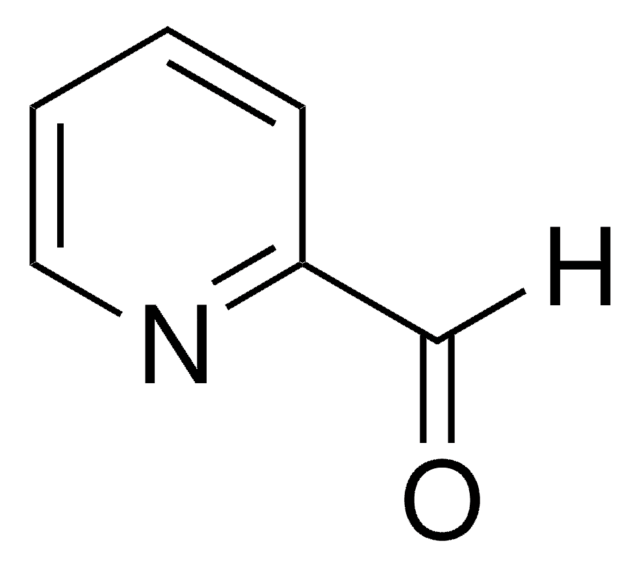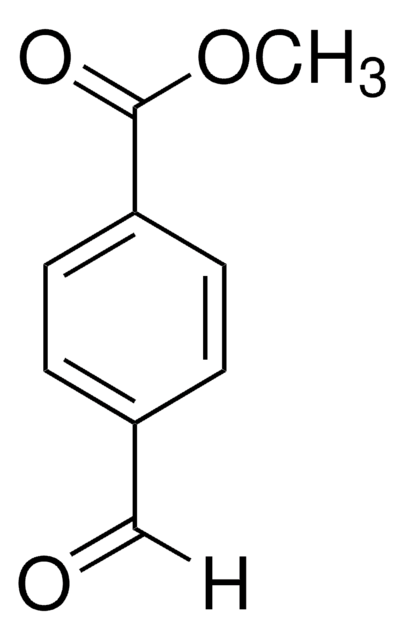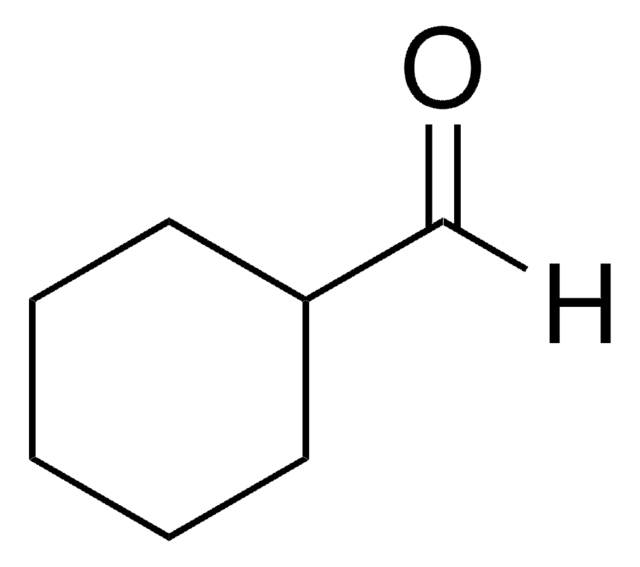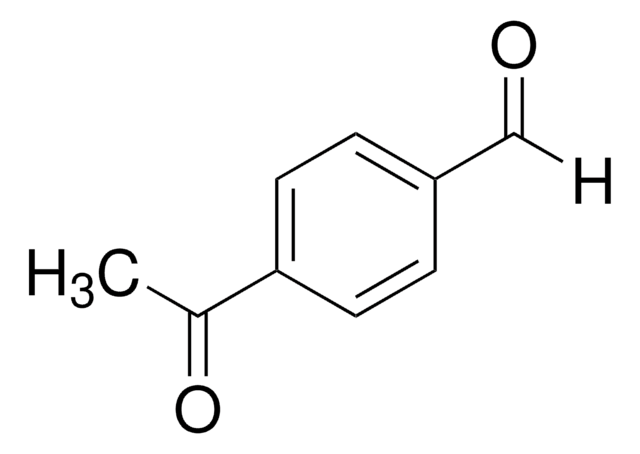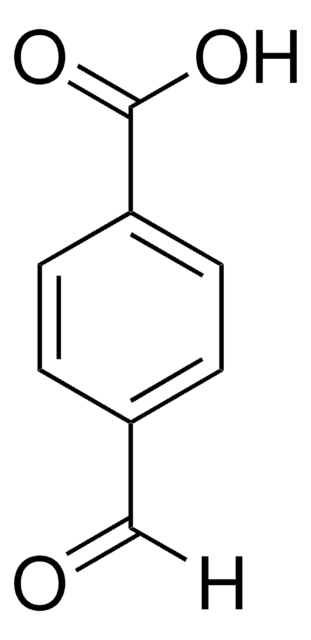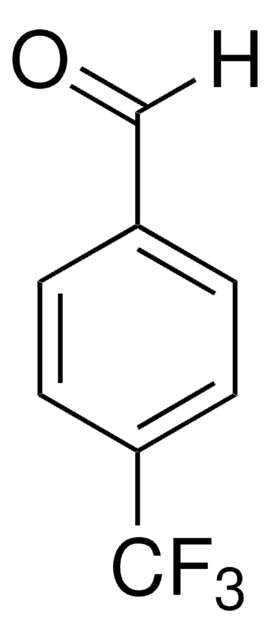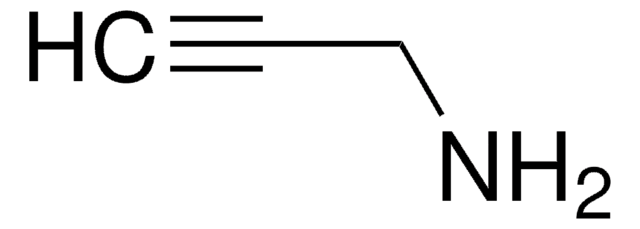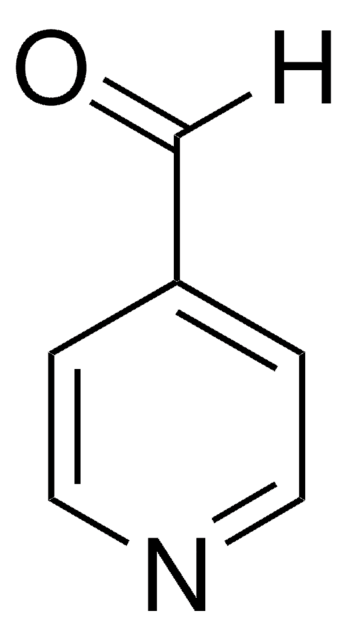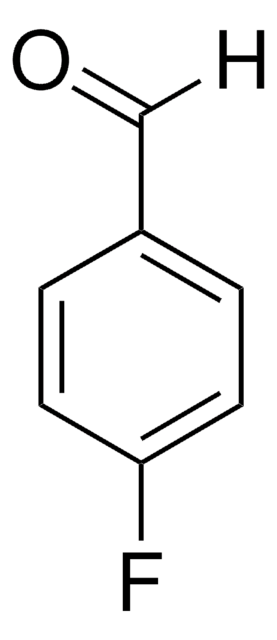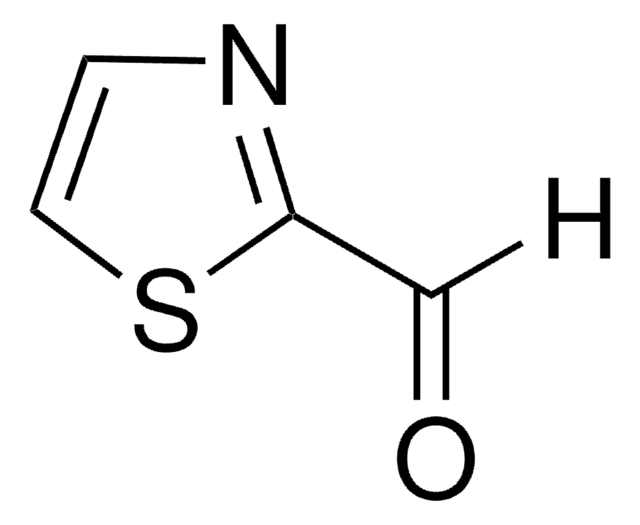242608
4-Acetoxybenzaldehyde
97%
Synonym(s):
4-Formylphenyl acetate
Sign Into View Organizational & Contract Pricing
All Photos(1)
About This Item
Linear Formula:
CH3CO2C6H4CHO
CAS Number:
Molecular Weight:
164.16
EC Number:
MDL number:
UNSPSC Code:
12352100
PubChem Substance ID:
NACRES:
NA.22
Recommended Products
Quality Level
Assay
97%
form
liquid
refractive index
n20/D 1.538 (lit.)
bp
152-153 °C/17 mmHg (lit.)
density
1.168 g/mL at 25 °C (lit.)
functional group
aldehyde
ester
SMILES string
CC(=O)Oc1ccc(C=O)cc1
InChI
1S/C9H8O3/c1-7(11)12-9-4-2-8(6-10)3-5-9/h2-6H,1H3
InChI key
SEVSMVUOKAMPDO-UHFFFAOYSA-N
Related Categories
General description
The reductive amination of 4-acetoxybenzaldehyde (4-formylphenyl acetate) with an azanonaborane cluster in the presence of H3BNH2(CH2)4NH2 was studied.
Signal Word
Warning
Hazard Statements
Precautionary Statements
Hazard Classifications
Eye Irrit. 2 - Skin Irrit. 2 - STOT SE 3
Target Organs
Respiratory system
Storage Class Code
10 - Combustible liquids
WGK
WGK 3
Flash Point(F)
235.4 °F - closed cup
Flash Point(C)
113 °C - closed cup
Personal Protective Equipment
dust mask type N95 (US), Eyeshields, Gloves
Regulatory Information
新产品
Choose from one of the most recent versions:
Already Own This Product?
Find documentation for the products that you have recently purchased in the Document Library.
Afaf R Genady
Organic & biomolecular chemistry, 3(11), 2102-2108 (2005-05-27)
The reactivity of an azanonaborane cluster containing free amino groups {H2N(CH2)4H2NB8H11NH(CH2)4NH2} towards ketones and aldehydes is investigated. In a one step reaction, the reductive amination of some ketones and aldehydes (namely acetone, benzaldehyde, 3-hydroxybenzaldehyde, 4-hydroxybenzaldehyde, 4-nitrobenzaldehyde, 4-acetoxybenzaldehyde, and 4-acetamidobenzaldehyde) with
Mahmoud H El-Maghrabey et al.
Journal of pharmaceutical and biomedical analysis, 158, 38-46 (2018-06-04)
α-Dicarbonyl compounds (α-DCs) are very clinically important as they are considered as advanced glycation end products (AGEs) precursors and biomarkers for many chronic diseases such as diabetes and vascular diseases, in addition to their major role in progression of complications
Our team of scientists has experience in all areas of research including Life Science, Material Science, Chemical Synthesis, Chromatography, Analytical and many others.
Contact Technical Service